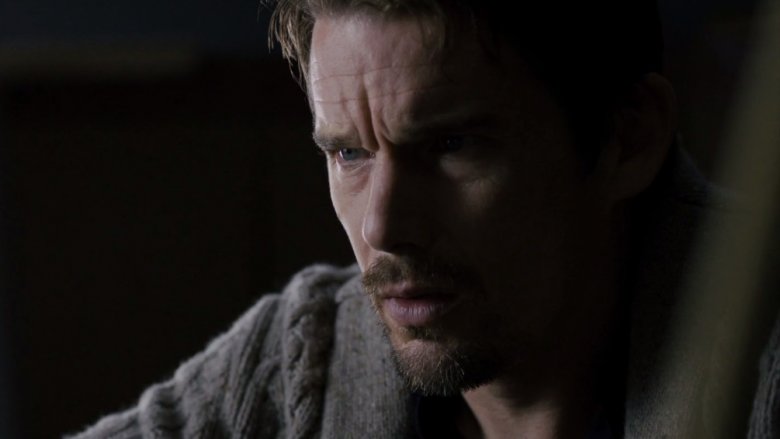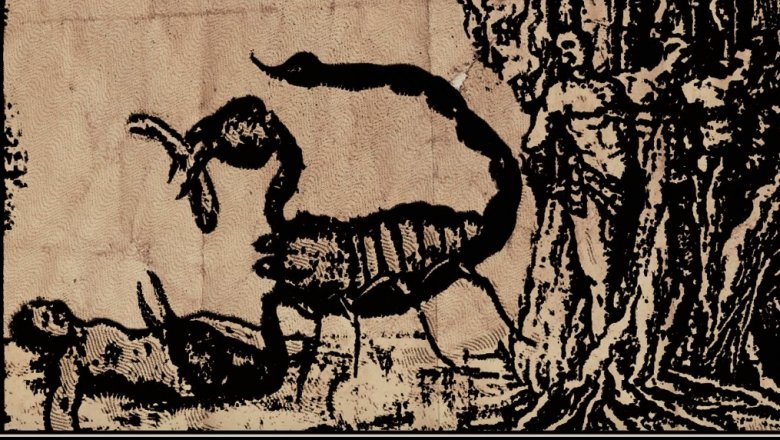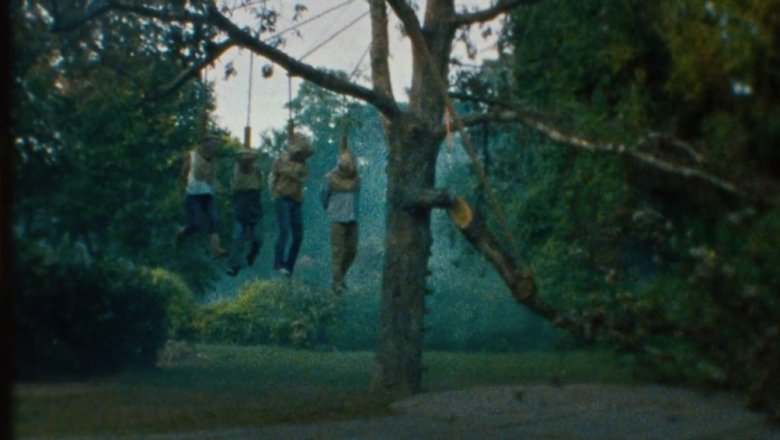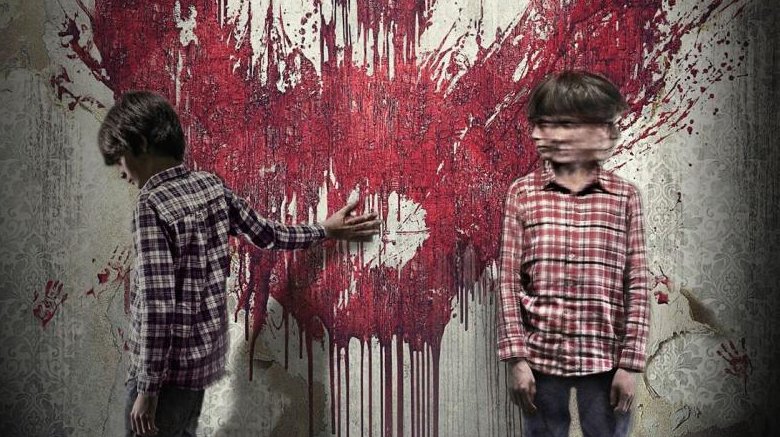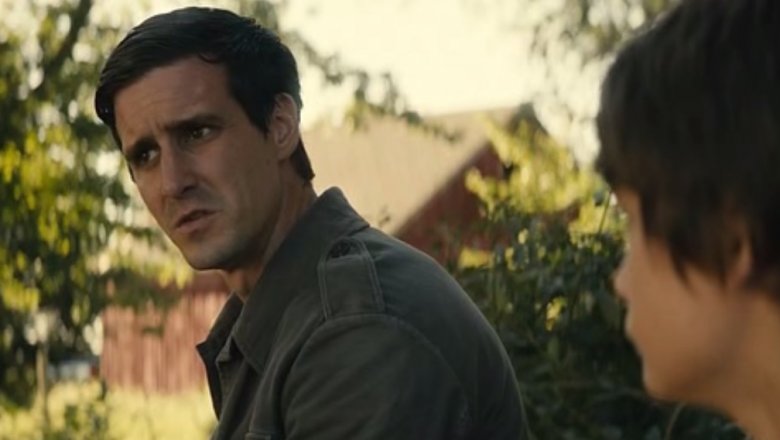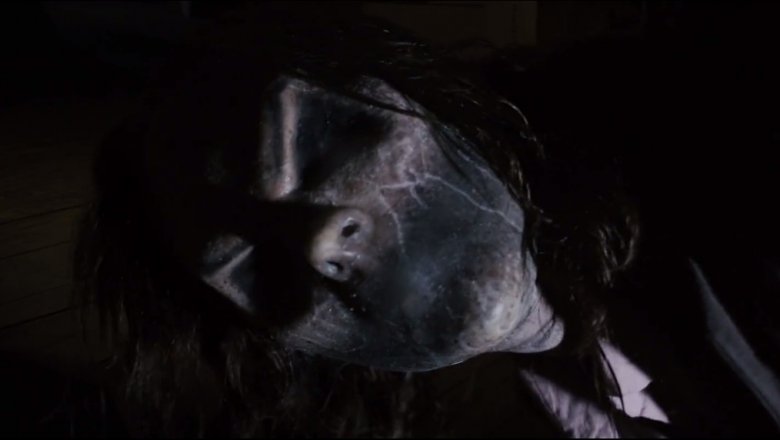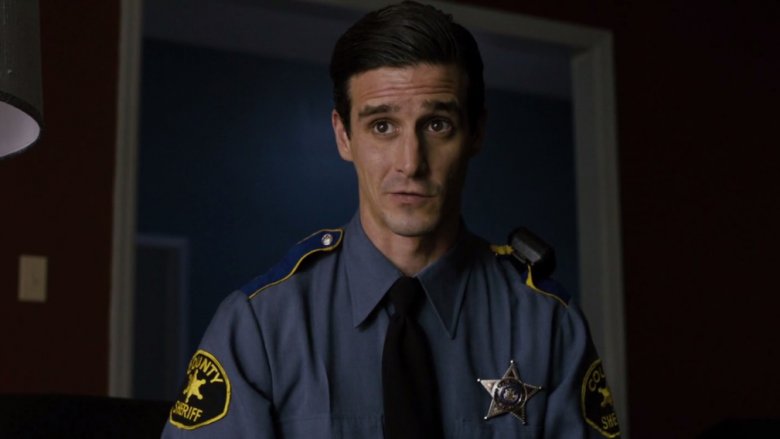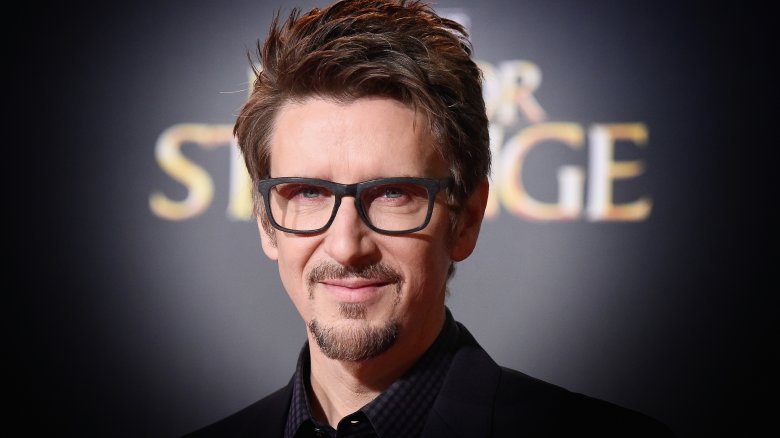Why We Never Got To See Sinister 3
Scott Derrickson's Sinister is among the better big-budget horror movies to come out in recent years. Although not without its flaws, its depiction of a true-crime author investigating old murders that were all recorded on reels of grainy film has moments that are truly creepy, and it's also, refreshingly, an original idea. Hollywood, of course, looks at original ideas not for what they are, but for the franchise opportunities they hold—it's all about dollars, baby.
But while Sinister got the sequel treatment in 2015, there's been no noise whatsoever on the development of a third chapter, and every indication points to the series being all but abandoned. Since Sinister 2, we've gotten four movies in The Conjuring series, two entries in the Paranormal Activity series, and two new Insidious movies, with another on the way—and all of these are the product of the same production company. So what gives? What is it about this series that has a typically sequel-happy business wanting nothing to do with it? We've got the answers for you. Roll the tape.
Sinister 2 didn't make enough money
As much as people may want to believe filmmaking is all about the artistry, movies are a business investment, and if financiers don't see a big return, the odds they'll come back to the table drop considerably. Producers, likewise, aren't as likely to pursue projects that are hard to raise money for, not without a guarantee that they'll recoup the costs in a way that's worth it.
Unfortunately, the Sinister series doesn't come off as a good investment anymore. This is straight from the mouth of super-producer Jason Blum, who knows a thing or two about getting a franchise off the ground from his experience shepherding the Paranormal Activity, Insidious, and The Purge franchises toward more sequels than can be counted on two hands. Asked about the prospect of a third Sinister movie during a Facebook Live chat in 2016, Blum was brutally honest: it isn't happening.
"We didn't do well enough with Sinister 2," the producer said. "Not enough people went to see Sinister 2 to make Sinister 3, which is really sad. One of the things that I get asked a lot is, 'What are your professional regrets?' Obviously I have a lot of regrets professionally. Every movie we make, some of them are great, some of them are less great, of course. Sometimes the movies work because of the movies, sometimes it's the marketing; it's a complicated thing."
Critics tore the second one apart
So why did audiences not latch onto Sinister 2 the way that they did for its predecessor? The first movie, which starred Ethan Hawke, made more than $77 million worldwide on a $3 million budget—a more than solid showing. The second one, however, had no big names, and made closer to $52 million on a $10 million budget. It's still a win on paper, but a serious drop-off compared to the original.
Marketing may be to blame, as Blum alluded, but you can't ignore the reviews—and Sinister 2's were bad. Very bad. "There comes a point when you have to say no to these horror sequels," said Wesley Morris, writing for Grantland. "There's no skill or idea visible anywhere, just the sound of money being sucked from your pockets." Most critics felt the same way, finding the movie to be pointless, cheap, unbelievable, and unnecessary.
And the critics aren't wrong. Sinister 2 is a bad movie—not just on its own, but because of the way it exhausted any forward momentum the first installment's story might have had.
Sinister 2 ruined the best part
The changes in the way the sequel approached its material had big implications for why a third movie would be a hard prospect to swallow. Like the first movie, Sinister 2 centers around a series of snuff films, each involving the grisly murder of what appears to be an entire family. In the first film, these sequences were truly disturbing. They're the best part of the movie, haunting sequences of perfectly tuned imagery and sound that will stick with you long after the rest of the movie's plot recedes from memory. They were things the protagonist—and by extension, the audience—felt like they shouldn't be allowed to see.
Sinister 2 ruins these sequences. No longer are they mysterious film reels from the attic of a murder house, played to one viewer with a droning score and a bracing realism. Instead, they're crudely shot B-movies, screened with a bargain-bin horror soundtrack from the louder-is-better school. Hilariously, the movies actually come with their own custom vinyl records, which play low-rent industrial music over scenes that worked so much better when they were silent and stark.
These are small changes, but they're important. In the second Sinister, the kill sequences stopped being disturbing, and became cheesy. With nothing else in the movie picking up the slack, the result was a dire, joyless viewing experience.
The sequel took away all mystery
The big twist at the end of the original Sinister, which Ethan Hawke's author character discovers to his own and the audience's horror, is that the murderers who perpetrated and filmed their acts weren't one person, and they weren't even adults—they were young children, led to kill their own families by the corrupting influence of an ancient monster named Bughuul.
The sequel takes a decidedly different approach to the material, turning the focus of its story to a new family. But the character we follow in the family isn't an adult—it's one of the children, already being courted by a ghostly crew of other kids trying to pressure him into killing his family and joining their ranks. Coming out at night, the corrupted kids screen the movies they made for the impressionable new guy, trying to edge him closer to joining the cult of Bughuul. It is, essentially, a look at what was going on offscreen with Ethan Hawke's daughter in the first Sinister.
Sinister 2 sincerely tried to do something different, and for that, we should give it credit. But here's the thing—the path that it chose doesn't work as horror, or as a tension-building story. The sequel dove into how the scary parts of the series work, but effective horror is all about a fear of the unknown. It's nuts how much Sinister 2 ruined its own mythology by taking all of the mystery out of it.
No heroes left alive
James Ransone, who played the unnamed deputy in the original, took over duties as the lead in the sequel. Someone had to—the first one ends with every character but Ransone's dying or being consumed by Bughuul's darkness. The second one ends with more secondary characters surviving, but Ransone presumably eats it just as the credits start to roll. With few people left alive to shape the plot around, the third movie would necessarily have to introduce someone completely new.
In most cases this could work, but Sinister 2 is unique in that any groundwork they could have made for future sequels with new characters just wasn't set up at all.
The story shifting focus to the kids under Bughuul's influence is not necessarily a bad thing. What the movie should have done, however, is actually bring Bughuul into the proceedings somehow—not necessarily as a monologuing madman, but a malevolent presence that really scares the audience. Instead, the main onscreen villain is a ghost child named Milo, who doesn't have much of a personality.
Bughuul, meanwhile, may as well not even be a character—he's just a frightening face, a jump scare. So much time is wasted in these movies talking about Bughuul's past, but he has no presence; he's a non-entity. Could he carry a third movie in an all-new setting with all-new characters? Probably not, which leads us to our next point.
Bughuul is a bad villain
This is a problem that started in Sinister and never got fixed. Bughuul is more than just a bad (very bad) name—he's a lousy character, too.
In one of the first movie's only truly bad scenes, Vincent D'Onofrio makes an appearance as a professor of the supernatural who videoconferences with Ethan Hawke's character about the nature of Bughuul—or Mr. Boogie, a.k.a. the Bogeyman. This Skype-based exposition engine interrupts the movie to tell the audience how Bughuul's powers work, but doesn't do anything to actually fuel our understanding of the character or his goals.
In The Exorcist, we came to know the demon inside Regan. The monster had personality. Think about this: if the plot of Sinister were altered to completely remove the monster, substituting in its stead, say, a corrupting virus of the soul, would it change the plot of the movie? Like, at all?
This hole is dug even deeper in the second one. While Sinister 2 delves deep into the mythology of Bughuul's ghostly, kids-only death cult, he never really does anything, and whatever closer look we get at him only serves to reveal there's nothing there. He's just a spooky face who never speaks, looking like nothing more than a narrower, grayscaled version of the Jigsaw doll.
The series creator doesn't want cheap sequels
Scott Derrickson, who co-wrote and directed the first movie, and co-wrote the sequel as well, has said he has a specific standard for horror franchises, and has no desire to watch Sinister turn into six movies worth of schlock.
"[C.Robert] Cargill and I have seen so many horror franchises—you know, we're really familiar with how they tend to work and what the bad tendencies are," Derrickson said in an interview with CinemaBlend. "And so we were both really committed to writing the kind of horror sequel we would like to see, and that proved to be a lot more difficult than I think either of us were expecting."
In envisioning a sequel to the original, Derrickson wanted to hold up to a certain standard of quality, and not make a series of movies with diminishing returns. This explains why the sequel was written from a different perspective, focusing on the children doing the killing rather than the adults who get killed. As he put it, "The trick of [Sinister 2] was finding a different point of view to get into it, because the horror sequels that I have really liked tend to expand the mythology but also deepen your appreciation of the original."
The fact that the pivot didn't actually work onscreen may mean Derrickson isn't willing to return to the well after a swing and a miss. It could redeem the series—but it could also make things worse.
The creator has moved on
The only way for Sinister's creator to be sure that another movie rose to a certain standard of quality, at this point, would probably be to direct it again himself. As director and writer, Derrickson would have total authority to call the shots, and could take real care to fine-tune the resulting movie. It's worth wondering what he would've done differently were he filming his own script for Sinister 2, for instance.
But at this point in his career, Derrickson likely doesn't have time to stay onboard as a main creative force. Around the time of Sinister 2's release, Derrickson was working on the Marvel movie Doctor Strange, catapulting him from a $3 million horror production into the world of big-budget studio behemoths. Since then, he's taken on the ambitious project of adapting Snowpiercer into a television series for TNT, and is expected to direct a sequel to Doctor Strange at some point.
With a likely wide range of projects to pursue at this point in his career, would a lower-budget third Sinister movie really stand out as a priority? Probably not.
Never say never
All of that said, there's no guarantee we won't see another version of Sinister onscreen at some point. In a world where remakes and reboots and recognizable names drive the movie business, a franchise never really dies, it just goes dormant. Look no further than the eighth Saw movie, Jigsaw, bringing the series back after seven years of inactivity. Rings brought the story of a cursed videotape back after 15 years, and The Texas Chainsaw Massacre is back again for an eighth installment in the form of another prequel story, Leatherface.
Maybe Sinister will come back like this, with the concept of the snuff films and the murderous children showing up in remixed fashion somewhere inside 10 or 15 years. Anything can happen if you have a recognizable name—and who can ever really forget a name like Bughuul?
